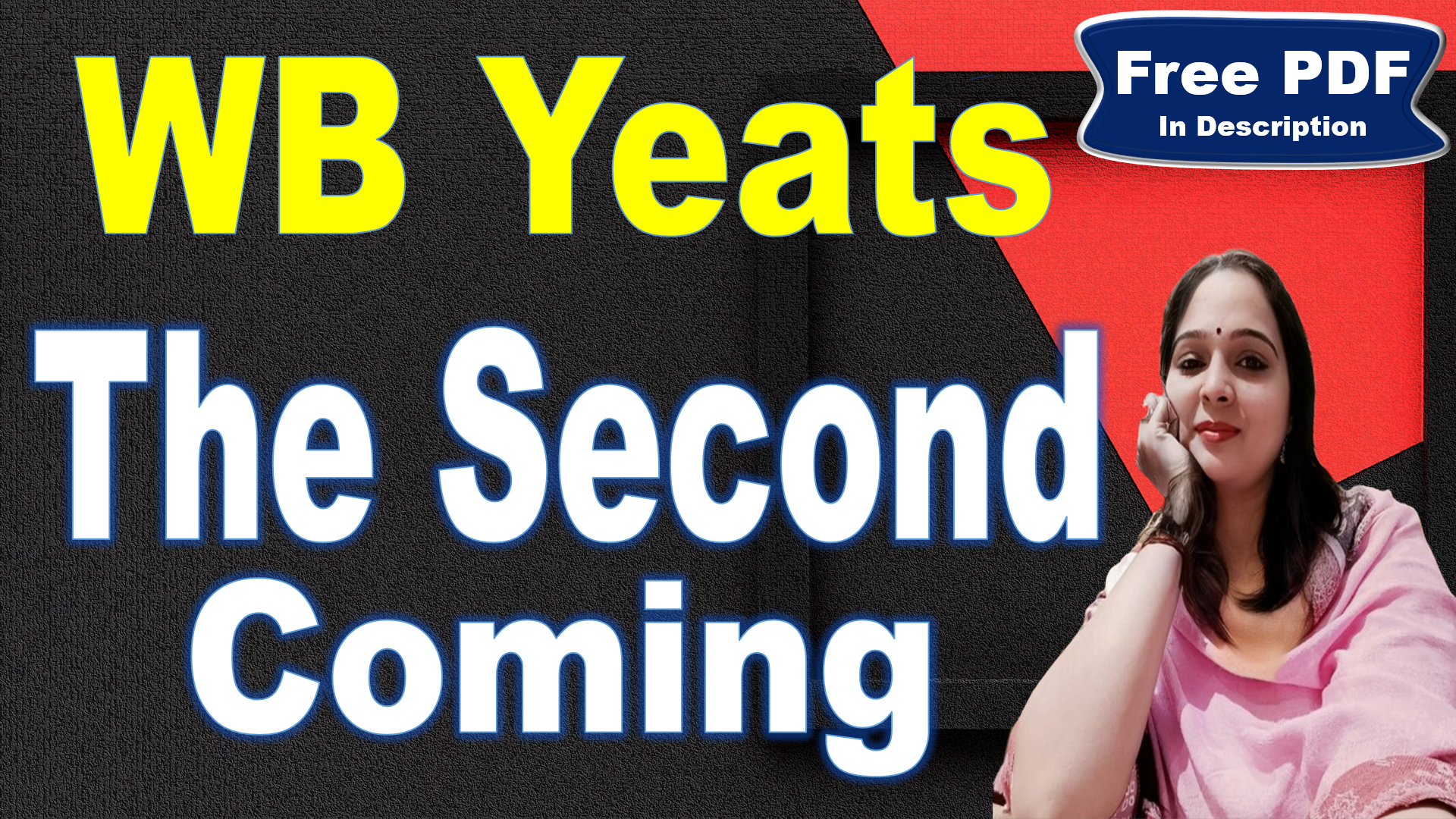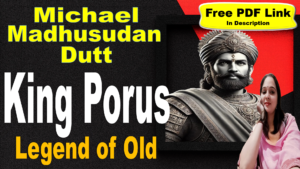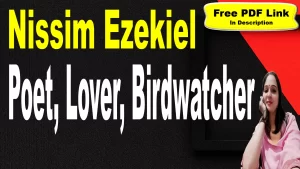The Second Coming Summary
“The Second Coming” by William Butler Yeats was first published in 1920 in the journal The Dial. It later appeared in his collection The Tower, published in 1928. The poem reflects the post-World War I atmosphere of disillusionment and uncertainty, capturing the sense of a world in upheaval and transition.
“The Second Coming” opens with a powerful image of a falcon flying in widening circles, losing contact with its falconer. This symbolizes the breakdown of order and control, suggesting that society is spiraling into chaos. The central idea is emphasized with the line “Things fall apart; the centre cannot hold,” indicating the collapse of traditional structures and norms. Yeats uses the metaphor of a “widening gyre” to illustrate the expanding chaos and the disintegration of the stable world order.
As the poem progresses, Yeats describes a world where “mere anarchy is loosed” and “the blood-dimmed tide is loosed,” evoking a sense of pervasive violence and disorder. Innocence is overwhelmed by this chaos, as “the ceremony of innocence is drowned.” The contrast between “the best” who lack conviction and “the worst” who are “full of passionate intensity” underscores the moral and ethical inversion occurring in society. Those who should be guiding and protecting society are passive, while those who are destructive are fervent and active.
The poem takes a prophetic turn with the mention of the “Second Coming.” Yeats envisions a revelation that is not a return of Christ, but the birth of a monstrous force from the “Spiritus Mundi,” a collective soul or universal consciousness. The imagery shifts to a desert where a “shape with lion body and the head of a man” is seen, symbolizing a new era that is both terrifying and inevitable. This beast, with its “gaze blank and pitiless as the sun,” represents a formidable and indifferent force moving inexorably towards Bethlehem, the birthplace of Christ.
In the concluding lines, Yeats reflects on the “twenty centuries of stony sleep” since Christ’s birth, now disturbed by a “rocking cradle.” The poem ends with a chilling rhetorical question: “And what rough beast, its hour come round at last, slouches towards Bethlehem to be born?” This suggests that a new, ominous epoch is dawning, marked by uncertainty and dread. Yeats’s vision of the future is one of impending doom, where the old world order is replaced by a monstrous new force, heralding a period of darkness and turmoil.
Key Points
Author:
William Butler Yeats: An Irish poet, playwright, and Nobel laureate (1865–1939).
Yeats was deeply influenced by Irish mythology, mysticism, and historical events.
Form (Rhyme Scheme):
The poem is written in blank verse, which means it has a consistent meter (iambic pentameter) but no rhyme scheme.
It consists of 22 lines divided into two stanzas.
The second stanza has 14 lines, making it the same length as a sonnet.
Speaker:
The speaker is an unnamed first-person narrator who observes the world and speculates on what’s to come.
We don’t know specific details about the speaker’s age, race, class, or gender identity.
The perspective is often attributed to Yeats himself, reflecting his concerns about societal upheaval.
Setting:
The poem doesn’t specify a particular time or place.
However, it captures the post-World War I era, marked by turmoil, disillusionment, and uncertainty.
Theme:
Transformation and Chaos: The poem takes place during a momentous transition from one world order to another.
Tumultuous Change: The widening gyre symbolizes disorientation and collapse.
Fear of the Unknown: The speaker’s dim vision of the future creates urgency and fear.
Metaphysical Unity: Despite chaos, the world is held together by some metaphysical force.
Plot:
The poem describes a world falling apart, where chaos reigns.
The speaker receives a vision of the future, replacing Jesus’s heroic return with a grotesque beast.
The unknown nature of this vision adds to its terror.
Tone:
The tone is ominous, urgent, and unsettling.
It conveys a sense of impending catastrophe and existential anxiety.
Style:
Yeats uses symbolism, drawing from his theory of “gyres” (interpenetrating spirals) representing cycles of history.
The poem blends mysticism, mythology, and social commentary.
The enigmatic ending leaves room for interpretation.
Message:
The poem suggests that the world is undergoing a profound transformation.
The arrival of a mysterious creature replaces traditional religious expectations.
Uncertainty and fear characterize this tumultuous period.
William Butler Yeats
Early Years and Background:
Birth: William Butler Yeats (1865–1939) was born in Sandymount, Dublin, Ireland.
Family: His father, John Butler Yeats, was a successful portrait painter, and his mother, Susan Mary Pollexfen, came from a wealthy merchant family.
Cultural Roots: Yeats belonged to the Protestant, Anglo-Irish minority that had controlled Ireland’s economic, political, social, and cultural life since the 17th century.
Childhood: He spent childhood holidays in County Sligo, where he developed a fascination with Irish legends and the occult.
Literary Career and Irish Literary Revival:
Irish Literary Revival: Yeats was a driving force behind the Irish Literary Revival, which sought to promote Irish culture, folklore, and legends.
Abbey Theatre: Along with Lady Gregory, he founded the Abbey Theatre, serving as its chief during its early years.
Nobel Prize: In 1923, he received the Nobel Prize in Literature for his significant contributions to poetry.
Themes and Style:
National Identity: Yeats celebrated Irish culture, myths, and legends in his works.
Spirituality and Mysticism: His interest in the divine, fate, and historical determinism influenced his poetry.
Art and Politics: Yeats believed art and politics were intertwined, using poetry to critique and educate.
Notable Poems:
“The Lake Isle of Innisfree”: A longing for peace and tranquility on an uninhabited island.
“When You Are Old”: Reflection on lost love and the passage of time.
“Sailing to Byzantium”: A quest for immortality through art.
Unique Spiritual System:
Yeats developed a complex system of spirituality, emphasizing fate and historical determinism.
His interlocking gyres symbolized the development and reincarnation of the soul.
The divine, whether literal or abstract, played a crucial role in his poetry.
Legacy and Impact:
Yeats’s poetry resonates with readers worldwide.
His exploration of love, nature, and history continues to inspire generations.
His influence extends beyond Ireland, making him one of the greatest poets of the 20th century.
Word Meaning
| Tough Word | Meaning in English | Meaning in Hindi |
| Gyre | A spiral or circular motion, often representing cycles of history | सर्पिल या वृत्ताकार गति |
| Falcon | A bird of prey with a long, pointed wings | बाज, शिकारी पक्षी |
| Falconer | A person who trains and hunts with falcons | बाज़ पालने वाला |
| Mere | Pure and simple; nothing more than | मात्र, केवल |
| Anarchy | A state of disorder due to absence of authority | अराजकता, अव्यवस्था |
| Blood-dimmed tide | A metaphor for widespread violence and bloodshed | रक्त से धूमिल ज्वार |
| Ceremony of innocence | Rituals or symbols of purity and moral goodness | मासूमियत का संस्कार |
| Conviction | Firm belief or opinion | दृढ़ विश्वास |
| Passionate intensity | Strong and intense emotion | प्रबल तीव्रता |
| Revelation | A surprising and previously unknown fact | रहस्योद्घाटन, प्रकट |
| Second coming | The anticipated return of Christ to Earth | दूसरा आगमन |
| Spiritus mundi | World spirit or collective unconscious | विश्व आत्मा |
| Gaze | A steady or intent look | टकटकी, दृष्टि |
| Pitiless | Showing no pity; cruel | निर्दयी, निष्ठुर |
| Reel shadows | Unsteady, moving shadows | घूर्णन छायाएँ |
| Indignant | Feeling or showing anger or annoyance at perceived unfairness | क्रोधित, आक्रोशित |
| Stony sleep | Deep, heavy, or prolonged sleep | गहरी नींद |
| Vexed | Annoyed, frustrated, or worried | परेशान, चिंतित |
| Rocking cradle | A metaphor for disturbance from birth | डगमगाने वाला पालना |
| Rough beast | A monstrous or ominous creature | भयानक जानवर |
| Slouches | Moves or walks with a stooping posture | धीमे-धीमे चलता है |
| Bethlehem | The birthplace of Jesus Christ | बेथलहम (ईसा मसीह का जन्मस्थान) |










